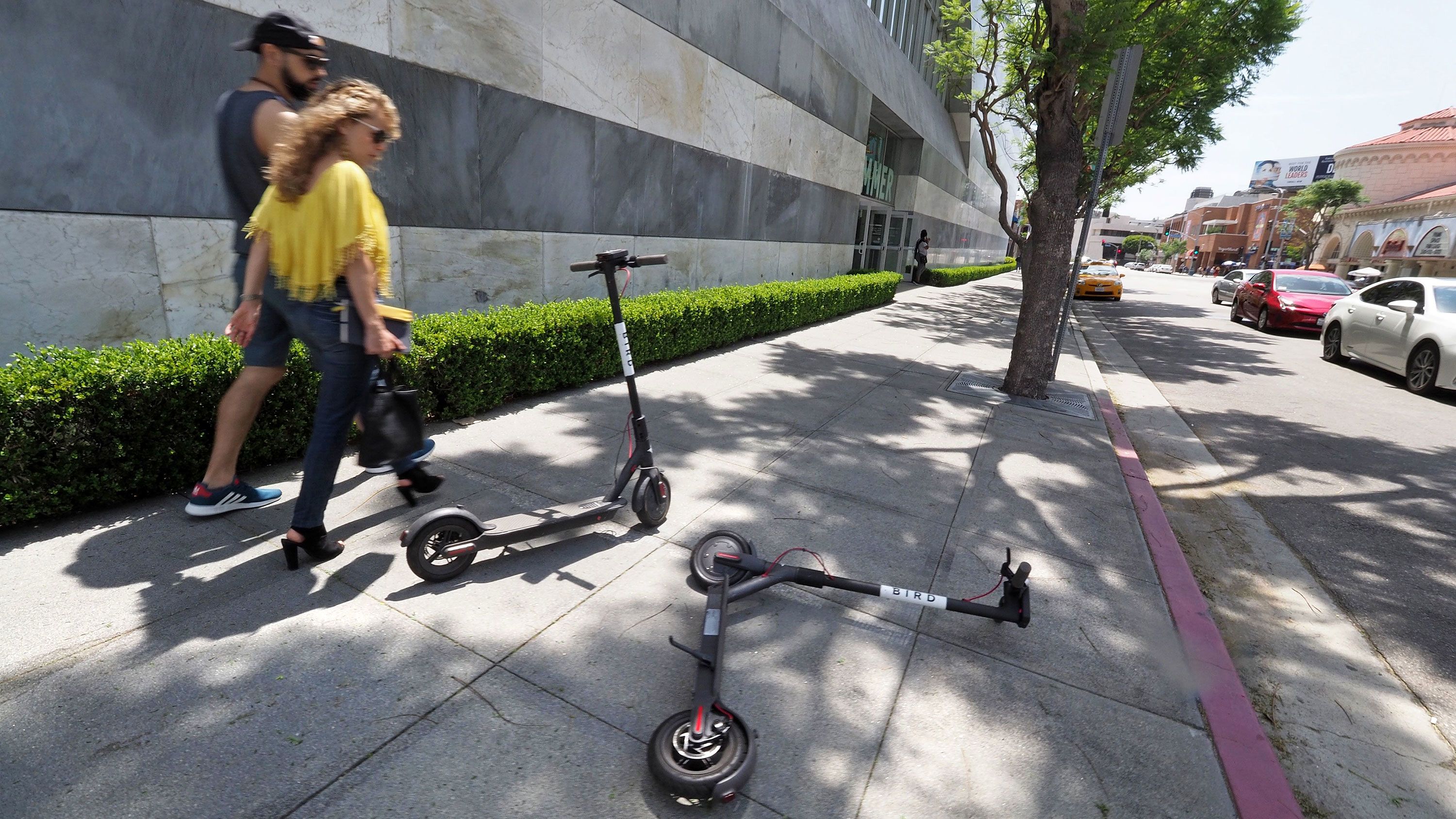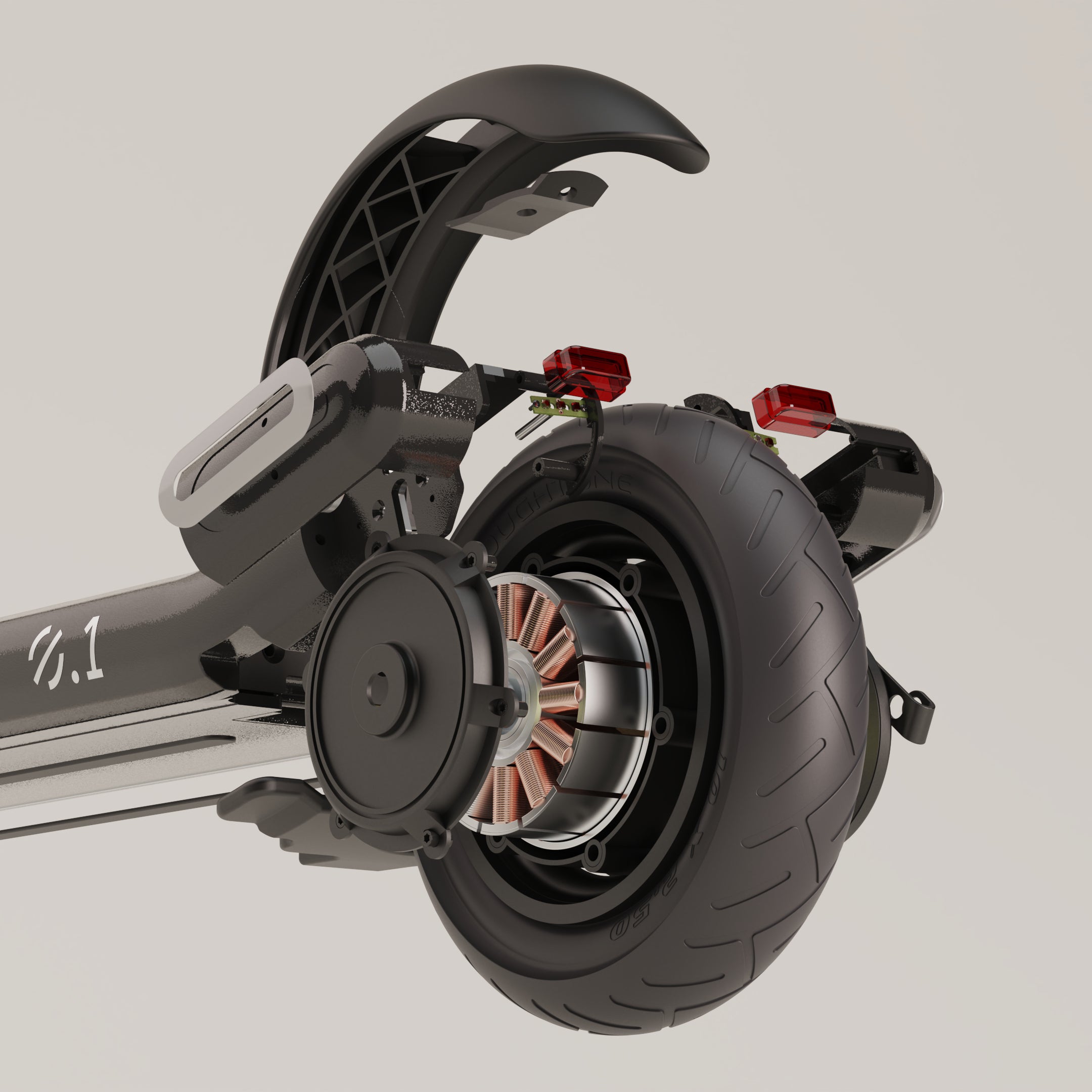If your electric scooter is going slow, it could be due to a low battery, underinflated tires, or motor and controller problems. To fix this issue, check the battery level, inflate the tires to the recommended pressure, and troubleshoot the motor and controller.
Additionally, ensure that the battery is fully charged and consider replacing it if necessary. Regular maintenance and checking these key components will help your scooter maintain optimal speed and performance.
Common Causes Of A Slow Electric Scooter
Common causes of a slow electric scooter include a low battery, underinflated tires, and motor or controller problems. To improve speed, check the battery level, tire pressure, and weight distribution. Consider replacing the battery or consulting a professional for further troubleshooting.
Low Battery:
One of the most common causes for a slow electric scooter is a low battery. Over time, the battery’s capacity can diminish, resulting in a struggle to output enough power for the scooter’s motor. To address this issue, ensure that your battery is fully charged. If you continue to experience slow speed, it may be necessary to test the battery’s health or consider a replacement.
Underinflated Tires:
Underinflated tires can significantly impact the speed and performance of an electric scooter. When the tire pressure is low, it increases the rolling resistance, making the scooter more difficult to move and reducing its speed. To fix this issue, check the tire pressure regularly and inflate the tires to the manufacturer’s recommended level.
Motor And Controller Problems:
Motor and controller problems can also contribute to a slow electric scooter. Faulty or malfunctioning components can prevent the scooter from reaching its full speed potential. If you suspect motor or controller issues, it is recommended to bring your electric scooter to a professional for diagnosis and repair.

Credit: nought.tech
How To Determine The Cause
If you’re wondering why your electric scooter is going slow, there could be several factors to consider. Common causes include a low battery, underinflated tires, and motor or controller issues. Make sure to check the battery level, tire pressure, and weight distribution to troubleshoot the problem.
If you’re wondering why your electric scooter is going slow, there are a few potential reasons. By identifying the cause, you can troubleshoot the issue and get your scooter back up to its full speed.
Battery Level
The first thing you should check is the battery level. Over time, the battery’s capacity can diminish, causing it to struggle to output enough power for your scooter’s motor. Make sure your battery is fully charged, and if you’re still experiencing issues, consider testing your battery’s health or replacing it if necessary.
Tire Pressure
Another factor that can affect your electric scooter’s speed is tire pressure. Underinflated tires create more friction, making it harder for the scooter to move quickly. Check the recommended tire pressure and inflate your tires accordingly. This simple adjustment can make a big difference in the scooter’s performance.
Weight
The weight on the scooter can also impact its speed. If you are carrying heavy items or if there’s excessive weight on the scooter, it can strain the motor and slow it down. Remove any unnecessary items and make sure you are within the recommended weight limit for your particular model. This will allow the scooter to operate at its optimal speed.
By addressing these three factors – battery level, tire pressure, and weight – you can determine the cause of your electric scooter’s slow speed. It’s essential to regularly check and maintain these aspects to ensure your scooter performs at its best. If the issue persists, it might be best to consult a professional to diagnose and fix any underlying motor or controller problems.
Solutions To Increase The Speed
If you’re wondering why your electric scooter is going slow, there are a few solutions you can try. Check the battery level, inflate the tires to the correct pressure, and inspect the motor and controller for any issues.
Deep Charge The Battery
One possible solution to increase the speed of your electric scooter is to deep charge the battery. Over time, the battery’s capacity can diminish, causing it to struggle to output enough power for the motor. To deep charge the battery, follow these steps:
- Plug the charger into an electric outlet.
- Connect the charger to the battery port on the scooter.
- Let the battery charge for at least 12 hours or until the charger light indicates it is fully charged.
Deep charging the battery can help restore its power and potentially increase the scooter’s speed.
Replace The Battery Or Battery Charger
If deep charging the battery doesn’t resolve the slow speed issue, it may be necessary to replace the battery or battery charger. Over time, batteries can degrade and lose their effectiveness. To replace the battery or battery charger, follow these steps:
- Research and purchase a compatible battery or battery charger for your specific electric scooter model.
- Locate the battery compartment on your scooter.
- Disconnect the old battery or charger from the scooter.
- Connect the new battery or charger to the scooter, ensuring the connections are secure.
Replacing the battery or battery charger can provide a fresh source of power and potentially increase the speed of your electric scooter.
Replace The Electric Scooter Motor
If deep charging the battery and replacing it or the charger doesn’t solve the slow speed issue, it may be necessary to replace the electric scooter motor. The motor is responsible for propelling the scooter forward, so if it is worn out or faulty, it can cause a decrease in speed. To replace the motor, follow these steps:
- Research and purchase a compatible motor for your electric scooter model.
- Locate the motor compartment on your scooter.
- Disconnect the old motor from the scooter.
- Connect the new motor to the scooter, ensuring the connections are secure.
Replacing the electric scooter motor can provide a renewed power source and potentially increase the speed of your scooter.
Use Correct Tire Pressure
Another possible solution to increase the speed of your electric scooter is to ensure you are using the correct tire pressure. Underinflated tires can create more resistance and slow down the scooter. To use the correct tire pressure, follow these steps:
- Check the recommended tire pressure for your electric scooter model. This information can usually be found in the user manual or on the manufacturer’s website.
- Use a tire pressure gauge to measure the current air pressure in the scooter’s tires.
- If the air pressure is below the recommended level, use an air pump to fill the tires to the appropriate pressure.
Using the correct tire pressure can reduce resistance and potentially increase the speed of your electric scooter.
Bring To A Professional
If none of the previous solutions have increased the speed of your electric scooter, it may be best to bring it to a professional for further inspection and repairs. A professional technician can diagnose any underlying issues that may be causing the slow speed and provide the necessary repairs or adjustments. Contact the manufacturer or a trusted electric scooter repair service to schedule a professional assessment.

Credit: www.cnn.com
Other Factors Affecting Scooter Speed
Other factors affecting scooter speed can include a low battery, underinflated tires, and motor or controller problems. To troubleshoot why your electric scooter may be going slow, check the battery level, tire pressure, and weight distribution. It’s also important to ensure that the battery is fully charged and consider replacing it if necessary.
Defective Battery
A defective battery is one of the common culprits behind a slow electric scooter. Over time, the battery’s capacity can diminish, causing it to struggle to output enough power for your scooter’s motor. To determine if your battery is the issue, start by checking its charge level. If it is low, try charging it fully and see if that improves the speed. If you’re still experiencing problems, you may need to test the battery’s health or consider replacing it altogether.
Faulty Controller Or Motor
The controller and motor are essential components that directly affect the speed of your electric scooter. If either of these parts is faulty, it can lead to a decrease in speed. A malfunctioning controller may not send the proper signals to the motor, causing it to operate at a slower pace. Similarly, a worn-out motor may not be able to generate the necessary power to propel your scooter at its intended speed. If you suspect that the controller or motor is at fault, it is best to consult a professional or bring your scooter for repair or replacement.
Other Factors To Consider
- Underinflated tires: Ensuring that your scooter’s tires are properly inflated can significantly impact its speed. Check the manufacturer’s guidelines for the recommended tire pressure and use a pressure gauge to ensure they are inflated correctly.
- Weight: The weight of the rider can also affect the scooter’s performance. Heavier riders may notice a slight decrease in speed compared to lighter individuals.
- Terrain: The terrain you ride on can influence the scooter’s speed. Uphill slopes or rough terrains require more power to overcome, resulting in a slower speed.
- Maintenance and upkeep: Regular maintenance, such as cleaning and lubricating the scooter’s moving parts, can help optimize its performance and prevent any issues that may affect speed.
By keeping these factors in mind and addressing any potential issues, you can ensure that your electric scooter operates at its optimal speed.
Tips On Maintaining Electric Scooter Speed
If you’ve noticed that your electric scooter is going slower than usual, there are several things you can do to maintain its speed. Here are some tips to keep your electric scooter running at its optimal performance:
Upgrade The Battery
One of the most common reasons for a slow electric scooter is a low battery. Over time, the battery’s capacity can diminish, causing it to struggle to output enough power for your scooter’s motor. Consider upgrading to a higher capacity battery to ensure maximum speed and range.
Upgrade The Motor
The motor plays a crucial role in determining the speed of your electric scooter. If you’re looking for a significant speed boost, consider upgrading to a more powerful motor. A higher wattage motor can deliver more torque and speed, allowing you to enjoy a faster ride.
Change The Sprockets
The sprockets on your electric scooter play a vital role in transferring power from the motor to the wheels. By changing the sprockets to a different size, you can increase or decrease the speed of your scooter. Opt for smaller sprockets to achieve a higher top speed.
Reduce Weight
The weight of the rider and any additional cargo can affect the performance of your electric scooter. Aim to reduce the overall weight by removing unnecessary items or opting for lighter accessories. By reducing the weight, you’ll enhance the scooter’s acceleration and top speed.
Remove The Speed Limiter
Many electric scooters come with a built-in speed limiter, which restricts their maximum speed for safety reasons. If you’re comfortable riding at higher speeds, you can remove the speed limiter. However, remember to ride responsibly and consider local regulations.
Replace The Drive Belt
The drive belt plays a crucial role in transferring power from the motor to the wheels. Over time, the drive belt can wear out or stretch, resulting in reduced speed. Replace the drive belt regularly to ensure optimal performance and maintain the scooter’s speed.
Regular Maintenance
Regular maintenance is crucial to keep your electric scooter running smoothly. Check for any loose connections, worn-out components, or signs of damage. Keep the scooter clean and lubricate moving parts as necessary. By following a regular maintenance schedule, you’ll maximize the scooter’s speed and longevity.
In Conclusion,
By following these tips, you can maintain and even increase the speed of your electric scooter. Upgrade the battery and motor, change the sprockets, reduce weight, remove the speed limiter, and replace the drive belt to keep your scooter running at its optimal speed. Don’t forget to perform regular maintenance to ensure a smooth and speedy ride.
Frequently Asked Questions On Why Is Electric Scooter Going Slow
Why Is My Electric Scooter Not Going Full Speed?
Possible Short Answer: A fast electric scooter not reaching full speed could be due to a low battery, underinflated tires, or motor and controller issues. Check battery level, tire pressure, and weight to troubleshoot the problem.
Why Is My Electric Scooter Going So Slow?
Your electric scooter may be going slow due to a few common reasons. First, check if the battery is fully charged or if it needs to be replaced. Low battery can affect the scooter’s power output. Also, check your tire pressure and make sure they are properly inflated.
Lastly, there may be motor or controller problems, so consider getting them checked.
How Do You Fix A Slow Electric Scooter?
To fix a slow electric scooter, first, find the cause of the issue. Deep charge the battery or replace it if necessary. Check the electric scooter motor and replace it if needed. Ensure the tires have the correct pressure. If the problem persists, consult a professional.
How Do I Increase The Speed Of My Electric Scooter?
To increase the speed of your electric scooter, you can try the following methods: 1. Upgrade the battery for more power. 2. Rewind or upgrade the motor for better performance. 3. Change the sprockets to improve acceleration. 4. Reduce weight to increase speed.
5. Remove the speed limiter if applicable. 6. Replace the drive belt for smoother operation. 7. Choose high-performance scooter tires. 8. Ensure regular maintenance for optimal performance.
Conclusion
If you’re wondering why your electric scooter is going slow, there could be a few possible reasons. Firstly, check the battery level as a low battery can greatly affect the speed. Additionally, underinflated tires and motor or controller issues can also contribute to a slow scooter.
Make sure to properly maintain your scooter by regularly checking the battery level, tire pressure, and weight. If problems persist, it may be necessary to replace the battery or seek professional assistance. Keep your scooter in optimal condition and enjoy faster rides.

